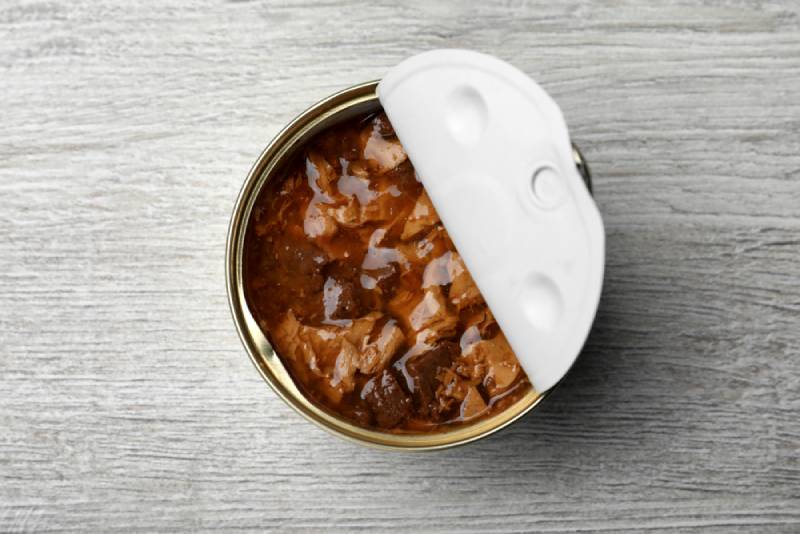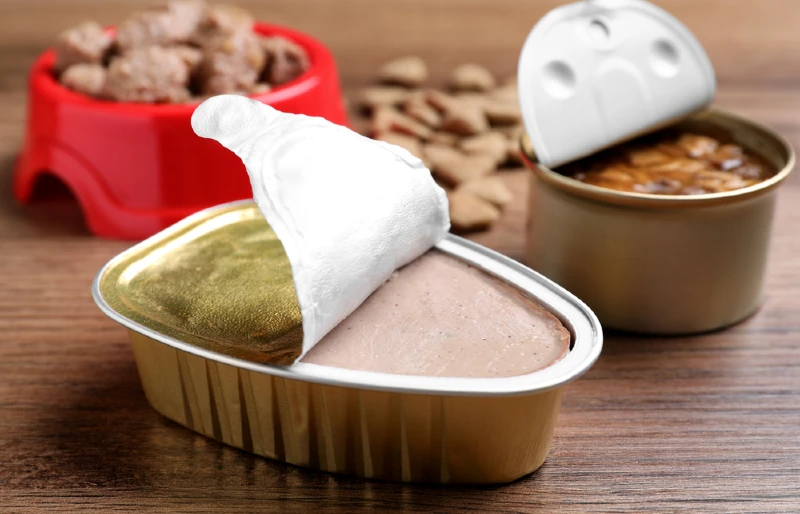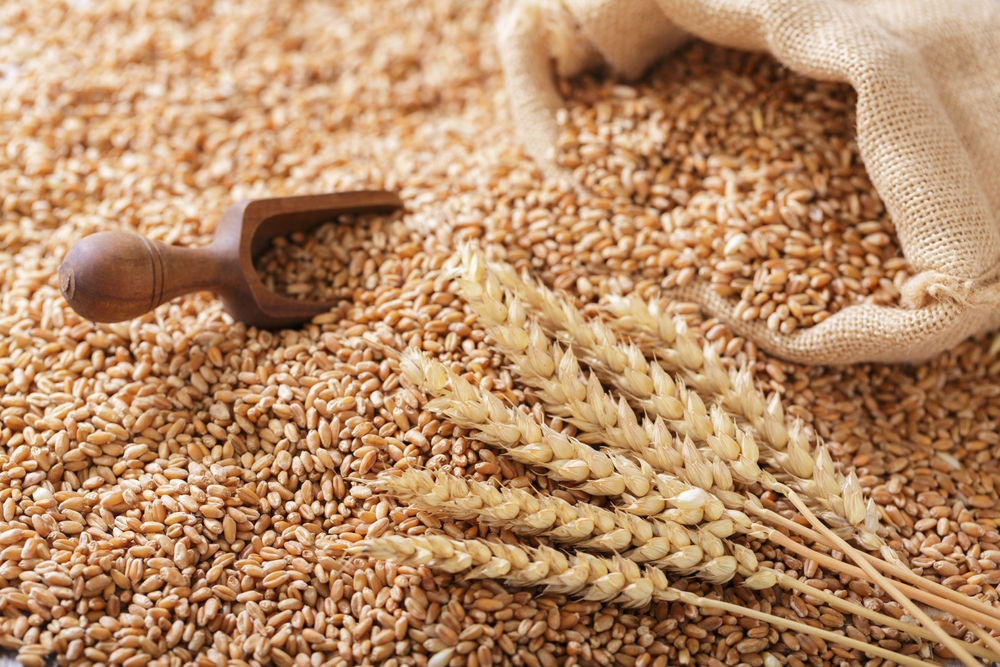Click to Skip Ahead
The world of dog food, diets, and what to feed your dog specifically has become an ever-changing topic. With so many brands, flavors, and types these days, it has almost become a complicated and mysterious affair to unravel. Yet it shouldn’t be. Your veterinarian, vet tech/nurse, or veterinary nutritionist are by far the best people to take tailored advice regarding dog diets from; however, arming yourself with the basics makes it all a lot easier and more interesting.
Before you choose the flavor and brand, your first decision, in the majority of cases, needs to be the type of food structure you wish to feed to your dog. Three of the popular forms are: dry (kibble or biscuits), wet (moist or canned), and semi-moist, but which is best?
What Does My Dog Require in Their Food?
Nutrition is defined as a solid or liquid that is capable of nourishing a living being, allowing normal function of cells and promoting life.
In brief, any diet you feed your dog must contain the correct amounts of six essential nutrients:
- Protein
- Fat (lipids)
- Carbohydrates
- Vitamins
- Minerals
- Water
Regardless of the form of the food, it’s important to make sure it is complete, balanced and suitable for your dog’s size and life stage. “Complete” means the food contains all the required nutrients, and “balanced” means the nutrients are present in the correct ratios. Foods labeled with the nutritional adequacy statement from the American Feed Control Officials (AAFCO) help you identify foods that meet your dog’s individual needs.1
Dogs, unlike cats, are not obligate carnivores, which gives canines the flexibility to eat both meat and plants. However, vegetarian diets are not generally advised in dogs, and this is best discussed with a professional if this is of interest to you.
Dogs do not need the same variety in their diets as we do. They do not have the same perception of food as humans do and have far fewer taste buds. Therefore, dogs do not require as much variety and choice of foods, but consistency is important. Always be sure to weigh out or measure your dog’s food to prevent weight gain or weight loss, as well as other nutritional imbalances and problems.
Pros & Cons of Semi-Moist Dog Food

This is perhaps the least popular of the three types of dog food and the least recommended. However, this format of dog food still holds good levels of water despite only being semi-wet when compared to dried food. For example, in general, the water content of semi-moist dog food ranges between 20–65%, except in Europe where it is 14–60%.
Semi-moist dog food is somewhere in the middle of kibble and canned meat and is more like a soft/squishy dry kibble.
- Available as a complete diet or as snacks/treats
- Provides good levels of water and is therefore supportive of hydration
- Generally more palatable than dry food
- Convenient and easy to feed and often store
- More expensive than dry food
- Ingredients vary but tend to contain higher levels of simple carbohydrates, which could be problematic for some dogs, especially if they have an underlying health condition like diabetes
- Often contains artificial colors, chemical preservatives, and chemical flavor enhancers
- May not be as widely available as dry or canned food due to being less popular
- Does not aid in dental or oral care
What Kind of Dog Should Eat Semi-Moist Dog Food?
Fussy dogs or those that have difficulty chewing may benefit from semi-moist food. However, it is not commonly recommended by vets. Most varieties are high in simple carbohydrates and therefore should be avoided for dogs with diabetes that require blood sugar regulation.
Pros and Cons of Dry Food

Dry dog food is also known as biscuits or kibble. It is often the staple diet used by pet parents and also the bedrock of the pet food industry. Of the three forms of dog food, dry food contains the least amount of water (less than 20% in the US and less than 14% in Europe). The reduced amount of water content naturally increases the amount of water your dog will drink. Fresh water needs to be available at all times regardless of the diet type, but if you happen to switch from canned food to kibble, you will notice the increase in drinking!
Dry dog food is the most popular for a reason. This is due to its many advantages.
- Convenient and readily available in-store and online
- Easiest and simplest to feed and manage portions
- Cheapest to buy
- Most are complete and balanced diets
- Plenty of choices: bag size, flavor, brand, etc.
- Some dry foods are better for their dental health
- Less messy, both for the environment and your dog’s face and fur
- Kibble lasts longer and doesn’t spoil as fast
- Can be used as treats or in interactive toys or puzzles
- Some dogs may not find the kibble as palatable as other forms of dog food
- Doesn’t provide hydration
- Tougher to chew for dogs with missing teeth or jaw issues.
- Usually requires air-tight storage
Pros & Cons of Canned or Moist Food

Canned food is likely the second most popular choice of dog owners and is the formation of soft meat and meat derivatives in various flavors packed into a container.
Moist dog food contains considerably more water when compared to dry food. Usually, this is more than 60–65%, depending on the country.
- Meaty and often more palatable than dry food
- Contributes to hydration automatically due to the higher water content
- Available in a variety of packaging: cans, trays, and pouches offering storage convenience
- Complete and balanced diet in most cases
- More expensive than other forms of dog food
- Messier
- Quickly spoils
- Requires refrigeration after opening
- May not be as widely available as dry food due to kibble being more popular
- Does not aid with dental or oral care
- Portions need to be larger due to high water content
Conclusion
No one of these forms of dog food is completely better than the other. The aim is to feed a complete diet and the best quality or brand that you can afford to feed your dog, as well as one they will eat and that you can buy consistently. Swapping foods regularly can promote fussy eaters and gastrointestinal upset.
The choice is yours, but consider all the pros and cons listed to see which fits best for your lifestyle and your dog. You may find a little trial of each may be needed to ascertain the best choice, but always consult with your veterinarian first, as they will be more than happy to help you make a choice.
Featured Image Credit: New Africa, Shutterstock












